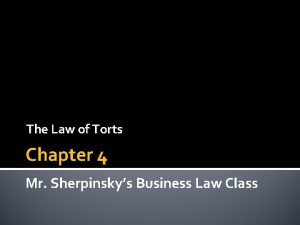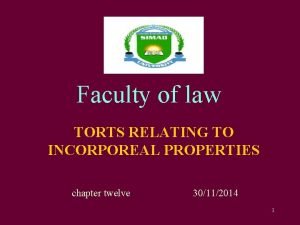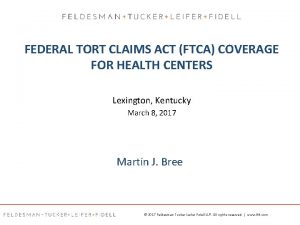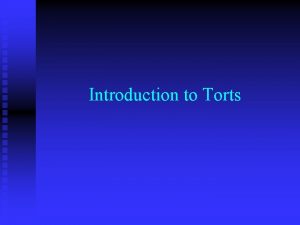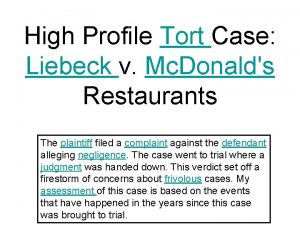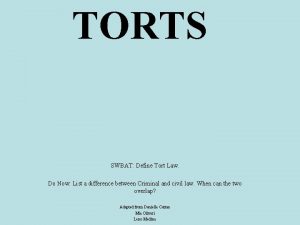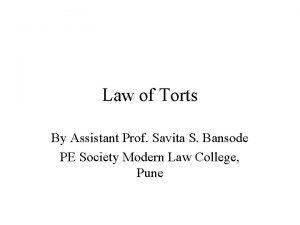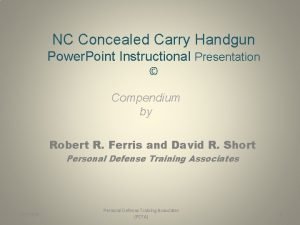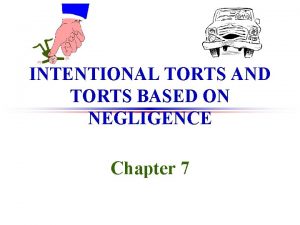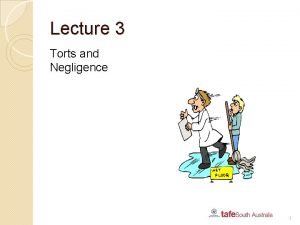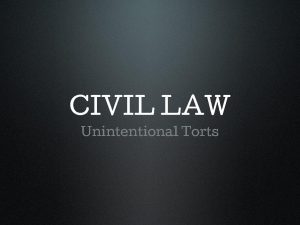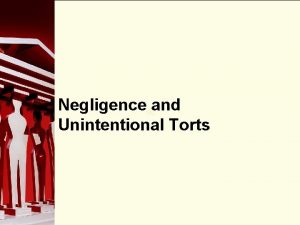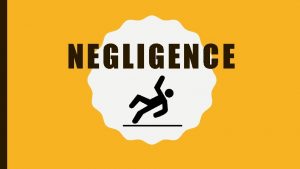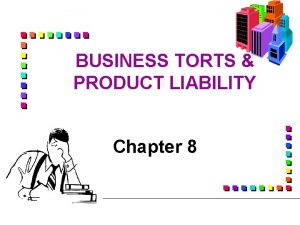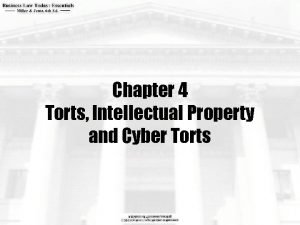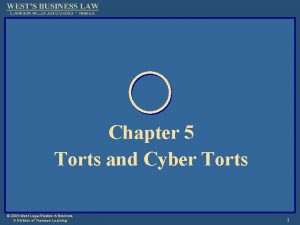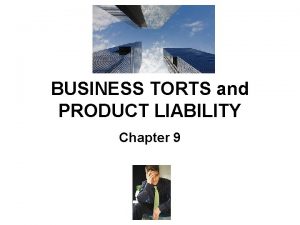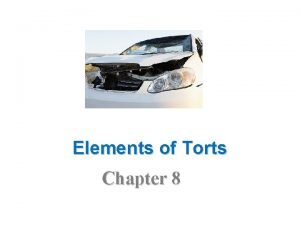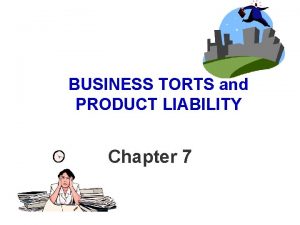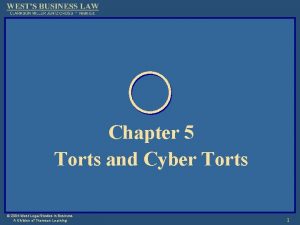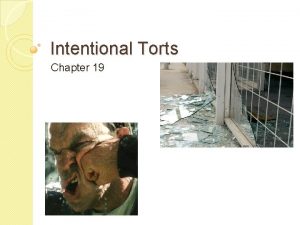Negligence Torts Chapter 14 Pg 415 Negligence The














- Slides: 14

Negligence Torts Chapter 14 Pg 415

Negligence The most common and important area of tort law. Refers to inattention, the possibility of harm, or carelessness in a task

3 characteristics 1) The action is unintentional 2) The action is unplanned 3) An injury results * carelessness and injury required

Examples of Negligence


Duty of Care pg 417 In a negligence suit, the plaintiff must show that the defendant owed him or her a Duty of Care Courts has to decide if the duty of care exists, and then they decide what a reasonable person would have expected in a similar situation. They use the neighbour principle. Case pg 418 Donoghue v, Stevenson

Youths and Teenagers Youths – under 12 Teenager 12 to 17 Not held accountable to same standards as adults Court decides accountability on a case per case basis The older – the more responsible If a minor is involved in a dispute, someone is appointed to act on their behalf ◦ Called GUARDIAN AD LITEM

Foreseeability Would a reasonable person have foreseen that the victim was going to be injured as a result of his or her action? Yes – breach No - no liability

If breach of Duty of Care is established: 1) Causation 2) Actual Harm or Loss

Causation p. 423 this is established – “But for “ test If an accident would There must be a direct link between not have occurred “but-for” the defendant’s actions and the injury that occurred negligence, this conduct is the cause to the victim of loss ‘Cause in Fact’, determined by the Read Paxton v. Ramji p. 420, what is ‘but-for’ the ‘but-for’? The Plaintiff must prove causation: Once


Actual Harm or Loss The injury has to be directly linked to the action and no other actions outside of the situation being discussed.

Burden of Proof The plaintiff must prove that all of the required negligence elements are present Balance of probabilities

Case In class work – group discussion Resurfice Corp v. Hanke

